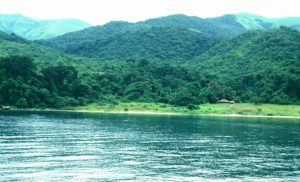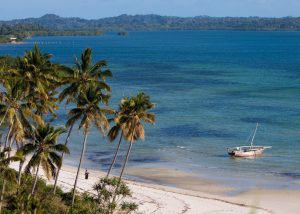 The local activities in Tanzania, such as fishing, swimming, and lake view, are among the unique activities in Tanzania. If you prefer there is a possibility to join fishing with the local people if you like.
The local activities in Tanzania, such as fishing, swimming, and lake view, are among the unique activities in Tanzania. If you prefer there is a possibility to join fishing with the local people if you like.
There are dozens of commonly played sports that involve water. These include sports that are located underwater, over water, or in Wate. One-person recreational activities, such as scuba diving and swimming, as well as competitive sports, such as boat racing, and underwater footbal, are all considered to be water sports.
Source: https://en.wikipedia.org/wiki/List_of_water_sports
Click to show/hide
Gombe Stream National Park
 Gombe Stream National Park is located in western Kigoma Region, Tanzania, 10 miles ( 20 km) north of Kigoma, the capital of Kigoma Region. Established in 1968, Gombe is a smallest national park in Tanzania, with only 20 square miles ( 52 km2) of forest running along the hills of the eastern shore of Lake Tanganyika. The terrain is distinguished by steep valleys, and the forest vegetation ranges from grassland ti alpine bamboo to tropical rainforst. Accessible on the Chimpanzee population. The Kasakale Chimpanzee community, featured in several book and documentaries, lives in Gombe stream National Park.
Gombe Stream National Park is located in western Kigoma Region, Tanzania, 10 miles ( 20 km) north of Kigoma, the capital of Kigoma Region. Established in 1968, Gombe is a smallest national park in Tanzania, with only 20 square miles ( 52 km2) of forest running along the hills of the eastern shore of Lake Tanganyika. The terrain is distinguished by steep valleys, and the forest vegetation ranges from grassland ti alpine bamboo to tropical rainforst. Accessible on the Chimpanzee population. The Kasakale Chimpanzee community, featured in several book and documentaries, lives in Gombe stream National Park.
Source:wikipedia
 The ancient forest may look tranquil and Serena. Still, suddenly an exciting whoop emerges from the heart of the jungle, with a dozen other voices immediately join in, rising in volume and tempo to a frenzied shrieking crescendo. Next to that, almost 98% of Chimpanzees share their genes with humans.
The ancient forest may look tranquil and Serena. Still, suddenly an exciting whoop emerges from the heart of the jungle, with a dozen other voices immediately join in, rising in volume and tempo to a frenzied shrieking crescendo. Next to that, almost 98% of Chimpanzees share their genes with humans.
No scientific expertise is required to distinguish between the individual repertoires of pants, hoots, and screams that define the celebrities, the power brokers, and the supporting characters. Perhaps you will see a flicker of understanding when you look into a chimp’s eyes, assessing you in return – a look of apparent recognition across the narrowest of species barriers.
Fishing, swimming & sea viewing, best time to visit:
July-October or December
Activity
Chimpanzee trekking, hiking, swimming, and snorkeling
Visit the site of Henry Stanley’s famous “ Dr. Livingstone I presume” at Ujiji near Kigoma and watch the renowned dhow builders at work.
Please contact us today!
Telephone number +31 36 737 05 99
Email: info@endless-safaris.nl
[toggle title='Pemba Island']
Pemba Island
 Pemba Island, known as “The Green Island” in Arabic (الجزيرة الخضراء), is an island forming part of the Zanzibar Archipelago, lying within the Swahili Coast in the Indian Ocean.
Pemba Island, known as “The Green Island” in Arabic (الجزيرة الخضراء), is an island forming part of the Zanzibar Archipelago, lying within the Swahili Coast in the Indian Ocean.
Source: https://en.wikipedia.org/wiki/Pemba_Island
Pemba Island, which lies north of the main island of Zanzibar and east of Tanga, is slightly smaller, and much more rural than Zanzibar. Separated from the mainland by the 2,620 foot (800m) deep Pemba Channel, Pemba is best known for its precipitous drops, big walls and drifts, and is the home of big pelagic dives, a true haven for experienced divers. Even snorkelers can indulge in coral diving in the shallow waters off Misali Island, just off the coast of Pemba. The diving off the coast of Pemba is far more spectacular than off the beaches of Zanzibar. Dolphins, turtles, sharks, whales, and mantas can be seen in the blue-green waters.
 Still virtually unknown to most beach-bound tourists, Pemba is visited by few travellers, and most who do visit do so for the exceptional diving and snorkelling opportunities found in the channels and coral reefs off the coast. While more and more tourists flock to Zanzibar each year, Pemba has remained relatively unchanged in the last decade, making it a suburb location for those travellers looking for something off-the-beaten path. Pemba is greener and hillier than Zanzibar, with a lush tropical feel to it. The island is surrounded by coral reefs, flanked with dense mangrove forests, and coloured by the rich greens of ten varieties of mangoes and hundreds of clove trees that support the livelihoods of local farmers. The island is said to be a centre for traditional medicine and witchcraft, with people traveling thousands of miles to see Pemba’s doctors.
Still virtually unknown to most beach-bound tourists, Pemba is visited by few travellers, and most who do visit do so for the exceptional diving and snorkelling opportunities found in the channels and coral reefs off the coast. While more and more tourists flock to Zanzibar each year, Pemba has remained relatively unchanged in the last decade, making it a suburb location for those travellers looking for something off-the-beaten path. Pemba is greener and hillier than Zanzibar, with a lush tropical feel to it. The island is surrounded by coral reefs, flanked with dense mangrove forests, and coloured by the rich greens of ten varieties of mangoes and hundreds of clove trees that support the livelihoods of local farmers. The island is said to be a centre for traditional medicine and witchcraft, with people traveling thousands of miles to see Pemba’s doctors.
For the adventurous traveler who visits this untouched island paradise, do not miss a visit to the historical ruins of the Pujini, Chwaka, and Ras Mkumbuu Ruins, or the Ngezi Forest Reserve (the remnants of a primeval rainforest). You can also tour the market and port area of Chake Chake (capital of Pemba) and watch ocean-going dhows during clove season at the port of Wete. Misali Island, just west of Chake Chake, is crisscrossed with walking trails that are home to a rich variety of bird life, including the endemic Pemba white-eye (Zosterops vaughani) and Pemba sunbird (Cinnyris pembae).
Transport to Pemba from Zanzibar Island or Dar es Salaam is by air or boat, and you can catch a ferry from Tanga. A limited number of lodges, hotels, and guesthouses dot the island, the best of which are located along the pristine, secluded waterfront of the north and west areas of Pemba Island. Recommended accommodations include Fundu Lagoon, The Manta Resort, and Pemba Misali Sunset Beach. We can arrange car hire, with driver, during your stay; we do not recommend self-drive due to the condition of the roads, but it is doable. Some excursions mentioned here require transport by boat, such as Misali Island and Ras Mkumbuu Ruins.Zanzibar
Fishing, swimming & sea viewing, best things to do
Excursions to Kidike (home to Pemba’s flying foxes); Misali Island; ruins of Ras Mkumbuu, Pukini, and Chwaka; Ngezi Forest Reserve; lighthouse at Verani Beach; markets of Chake Chake; water sports, such as snorkelling, fishing, and diving at beginner to advanced levels
NB: Snorkeling is an activity anyone can do without knowing how to swim. There are special skilled people/ instructors who can assist you to do it, with support of special equipment if necessary. All to put your enjoyment to the highest level.
Please contact us today!
Telephone number +31 36 737 05 99
Email: info@endless-safaris.nl
Saadani national park
Saadani National Park
 Saadani National Park is Tanzania’s 13th National Park. Tourists can view animals basking along the Indian ocean shores. It has an area of 1062 km2 and was officially gazetted in 2005, from a game reserve which had existed from 1969. It is the only wildlife sanctuary in Tanzania bordering the sea.
Saadani National Park is Tanzania’s 13th National Park. Tourists can view animals basking along the Indian ocean shores. It has an area of 1062 km2 and was officially gazetted in 2005, from a game reserve which had existed from 1969. It is the only wildlife sanctuary in Tanzania bordering the sea.
Saadani’s wildlife population is increasing during recent years after it has been gazetted as a National Park and was a hunting block beforehand. Wildlife in Saadani includes four of the Big Five, namely East African lions, African bush elephants, buffaloes and African leopards. Masai giraffes, Lichtenstein’s, hartebeest, common waterbucks, blue wildebeests, bohor reedbucks, common and red duikers, Dik- Dik, yellow baboons, vervet monkeys, black and White Colobus monkey, civets, mongooses, genet cats, porcupines, sable antelopes, warthogs, hippopotamus, crocodiles, nile monitors are found in the park.
Source:wikipedia
 Palm tree are waving in the cool sea breeze. Located in the center of the historic triangle of Bagamoyo, Pangani, and Zanzibar, Saadani National Park covers 1100km square. It is the only wildlife sanctuary in Tanzania bordering the sea. The climate is coastal, hot, and humid. It offers a unique combination of both marine and mainland flora and fauna in a culturally fascinating setting. About 30 species of larger mammals are present, as well as numerous reptiles and birds. Besides many fish species (over 40), green turtles, humpback whales, and dolphins occur in the ocean nearby.
Palm tree are waving in the cool sea breeze. Located in the center of the historic triangle of Bagamoyo, Pangani, and Zanzibar, Saadani National Park covers 1100km square. It is the only wildlife sanctuary in Tanzania bordering the sea. The climate is coastal, hot, and humid. It offers a unique combination of both marine and mainland flora and fauna in a culturally fascinating setting. About 30 species of larger mammals are present, as well as numerous reptiles and birds. Besides many fish species (over 40), green turtles, humpback whales, and dolphins occur in the ocean nearby.
Saadani is the only park with fully protected coastal forest in Eastern Africa. The mangroves protected the beaches and provided a habitat for the breeding of fish and other marine animals..
Fishing, swimming & lake view, best time to visit
In rainy season (March-April), the muddy roads can make travelling in the southern parts of the park very difficult. It is advisable to inquire about the condition of the road before traveling
Fishing, swimming & sea viewing, activity
Game viewing, boating, beach and cultural tourism.
Please contact us today!
Telephone number +31 36 737 05 99
Email: info@endless-safaris.nl


 +31 36 737 05 99
+31 36 737 05 99



